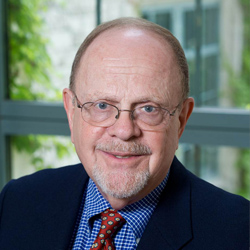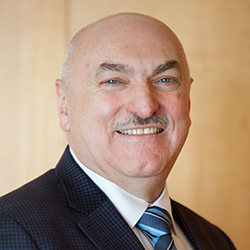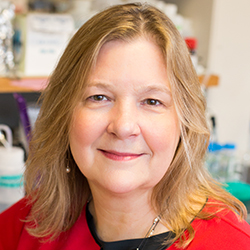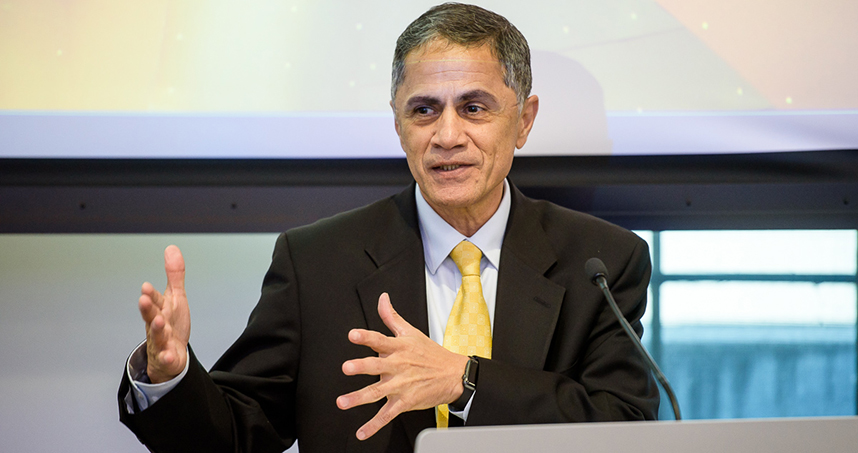Experts Discuss the Future of Infrastructure
Mobility 2050 study unveiled at symposium with the AEM
From autonomous vehicles to a diversity of ride-sharing forms, US transportation is guaranteed to change within the next 30 years. These changes will require adaptation of current infrastructure — but in what way? And how can we help encourage these changes?
A new Northwestern-led study attempts to answer these questions by exploring how future trends and opportunities will influence US transportation infrastructure by the year 2050. The comprehensive study was unveiled yesterday at “Mobility 2050: A Vision for Transportation Infrastructure and How We Can Get There,” a symposium that featured scholars, policymakers, and industry leaders.
 Northwestern’s Transportation Center conducted the interdisciplinary study at the request of the Association of Equipment Manufacturers (AEM). Northwestern Engineering professors who participated in the study include Fabian Bustamante, Gianluca Cusatis, Kimberly Gray, Hani Mahmassani, and Joseph Schofer.
Northwestern’s Transportation Center conducted the interdisciplinary study at the request of the Association of Equipment Manufacturers (AEM). Northwestern Engineering professors who participated in the study include Fabian Bustamante, Gianluca Cusatis, Kimberly Gray, Hani Mahmassani, and Joseph Schofer.
“When we were contacted to do this study with the AEM, it was the perfect opportunity for us to join forces for a common objective,” said Julio M. Ottino, dean of Northwestern Engineering. “We were delighted to help produce a report that outlines future challenges.”
“Everyone in this room shares a common objective,” said Ron De Feo, CEO of Kennametal and chairman of the AEM’s Infrastructure Vision 2050 Task Force. “We want to leave our children and successors with a better world than we have today. I’m proud to help start this discussion.”
In the keynote speech, Victor Mendez, deputy secretary of the US Department of Transportation, discussed how infrastructure will need to adjust to growing populations, increased freight travel, and extreme weather conditions.
“If we do nothing, there will be more congestion, and we’ll lose more time waiting in traffic,” Mendez said. “Greenhouse gases will also increase.”
Mendez said that technology will offer many solutions for the future, including autonomous vehicles, which could increase safety and reduce traffic-related deaths. He also called for improved infrastructure for underserved areas, which are often cut off from the larger community due to lack of transportation. New bus or train services, for example, can connect these areas to opportunities and improve the community as a whole.
 Northwestern Engineering’s Mahmassani, Gray, and Schofer presented major findings from the Mobility 2050 report. Mahmassani, the William A. Patterson Distinguished Chair in Transportation, said that a major challenge will be the increasing diversity in transportation methods. In addition to autonomous vehicles, more vehicles will be connected directly to the Internet. He also said there will also be an increase in car sharing and walking.
Northwestern Engineering’s Mahmassani, Gray, and Schofer presented major findings from the Mobility 2050 report. Mahmassani, the William A. Patterson Distinguished Chair in Transportation, said that a major challenge will be the increasing diversity in transportation methods. In addition to autonomous vehicles, more vehicles will be connected directly to the Internet. He also said there will also be an increase in car sharing and walking.
“Major improvements will be required to accommodate mixed traffic,” said Mahmassani, who directs Northwestern’s Transportation Center. “Infrastructure is no longer just thinking about pavement. We will have to combine mobility with the electric grid and telecommunications. New software programs will be needed for connected vehicles and smart cities.”
Gray added that change will happen most rapidly in cities and advocated for smart, sustainable cities, which integrate information and communication technologies and are driven by social and environmental issues rather than by the market. Transportation is very important for a city’s many needs, including people, materials, food, and water, but current infrastructure is deteriorating, outdated, and vulnerable to unpredictable collapse. Cities need more dynamic, sustainable transportation systems that will prepare them for the future.
 “Business-as-usual tends to be the route we’re on,” said Gray, professor and chair of civil and environmental engineering. “I hope we’ll be able to nudge our behavior to a different route because there is danger in inaction.”
“Business-as-usual tends to be the route we’re on,” said Gray, professor and chair of civil and environmental engineering. “I hope we’ll be able to nudge our behavior to a different route because there is danger in inaction.”
Schofer said that in order to meet future goals, infrastructure needs steady, sufficient funds and strategy and metrics for making informed decisions.
“It’s not just a matter of having more money,” said Schofer, associate dean of Northwestern Engineering and professor of civil and environmental engineering. “We need to make better decisions that help us save money and save time without damaging the environment or sacrificing our values.”
Although the driving population is swelling and travel is increasing, highways are collecting less money than in the past. This is mostly because motor vehicles have become substantially more fuel efficient, and construction costs have doubled since the federal gas tax was last increased. Drivers of electric vehicles, a segment expected to grow in the future, are also not contributing to road network maintenance through fuel taxes. Schofer proposed a mileage-based usage fee to make road usage fees more equitable and provide long-term funding.
Schofer then moderated a panel discussion with De Feo, Gray, Randall Blankenhorn, secretary of the Illinois Department of Transportation, and Austin Ramirez, CEO of Husco International. The group discussed how to increase funding, make room for technology, and depoliticize infrastructure projects.
“As engineers, we tend to think that technology will save us,” Gray said. “The technology exists, so that’s not our major obstacle. The obstacle is behavior.”
